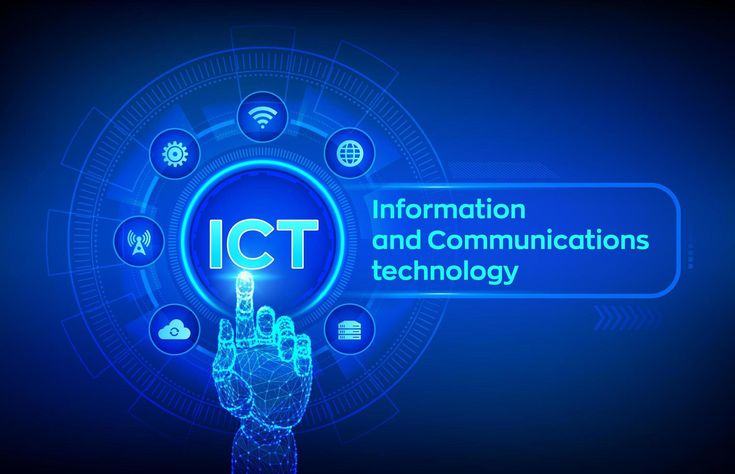Information and Communication Technology (ICT) is rapidly transforming our world, impacting industries from healthcare to finance and education. Imagine a world connected seamlessly, with information accessible at your fingertips, and processes streamlined for maximum efficiency—that’s the potential of ICT. However, many businesses struggle to adapt to these changes, leading to missed opportunities and increased operational costs. This article explores the core principles of ICT, highlighting key challenges and practical strategies for successful implementation. We will discuss the significance of effective ICT, its key components, and provide actionable steps for businesses to successfully leverage its power. The structure of this article will cover definitions, components, challenges, and strategic applications of ICT in modern business.
Defining Information and Communication Technology
Understanding the Fundamentals
Information and Communication Technology (ICT) encompasses all forms of communication, information processing, storage, and retrieval. It involves a wide range of technologies, from traditional telephones and the internet to sophisticated software and complex systems. ICT is not just about computers; it’s about the entire ecosystem enabling efficient communication and information management. It facilitates interactions between people, organizations, and systems, connecting them to share data and insights in a timely and efficient manner. The very concept of globalization is intrinsically tied to the advancement and integration of ICT across different regions. For example, consider global supply chains – tracking and managing them efficiently depends heavily on robust ICT systems.
The Interconnected Nature of ICT
ICT components aren’t isolated entities; they are interconnected to create a dynamic network. This interconnectedness allows for seamless data flow, enabling real-time decision-making and improved operational efficiency. Imagine a real-time inventory tracking system for a retail store. The system instantly updates as items are sold, allowing for proactive inventory management and reducing potential stockouts.
Key Components of ICT
Hardware and Software
ICT relies heavily on hardware, including computers, servers, and communication devices. These are supported by software applications, ranging from basic productivity tools to complex enterprise resource planning (ERP) systems. High-performance computing and advanced software are key components, enabling complex data processing and analysis for effective decision-making in areas like scientific research and financial modeling. For example, in scientific research, large datasets are often analyzed using high-performance computing clusters, enabling faster and more effective results.
Networks and Communication
Networks, such as the internet, enable the exchange of information across vast distances. This communication aspect of ICT is crucial for both individual and organizational interactions. Modern communication technologies are characterized by the integration of multiple channels, such as text, voice, and video, allowing for more diverse and dynamic interactions. Consider video conferencing, which has become an essential communication tool for remote teams and businesses, enabling efficient collaboration and communication.
Challenges in ICT Implementation
Security Concerns
Security is a major concern in ICT. Data breaches and cyberattacks can have severe consequences for businesses, leading to financial losses and reputational damage. Robust cybersecurity measures are essential to safeguard sensitive data and protect against unauthorized access. In recent years, there has been an increase in sophisticated cyberattacks targeting both large corporations and smaller businesses, highlighting the importance of security awareness and proactive protection.
Cost and Infrastructure
The initial investment in ICT infrastructure and equipment can be substantial. Maintaining and upgrading these systems also presents ongoing costs. Smaller businesses sometimes struggle with these costs and find it difficult to compete with larger corporations. However, cloud computing has provided an increasingly cost-effective and scalable alternative for smaller businesses.
Strategic Applications of ICT
Enhancing Business Processes
ICT can streamline business processes, from customer service to manufacturing. For example, automation of tasks can reduce operational costs and increase efficiency. Automation has been extensively used in manufacturing industries for optimizing production lines and improving worker safety.
The Future of ICT
Emerging Technologies
Emerging technologies, including artificial intelligence (AI) and machine learning (ML), are transforming the landscape of ICT. AI and ML are now used for tasks like fraud detection and automating customer service. These technologies are already impacting businesses by optimizing processes, improving decision-making, and enhancing customer experiences.
In conclusion, Information and Communication Technology (ICT) is crucial for modern progress and drives innovation across diverse sectors. From enhancing communication efficiency to revolutionizing business processes, ICT continues to shape the future. By staying updated on the latest trends and adopting appropriate strategies, organizations can leverage ICT to gain a competitive edge and boost efficiency. Embrace the opportunities presented by ICT and prepare for a future powered by technology, communication, and innovation.
